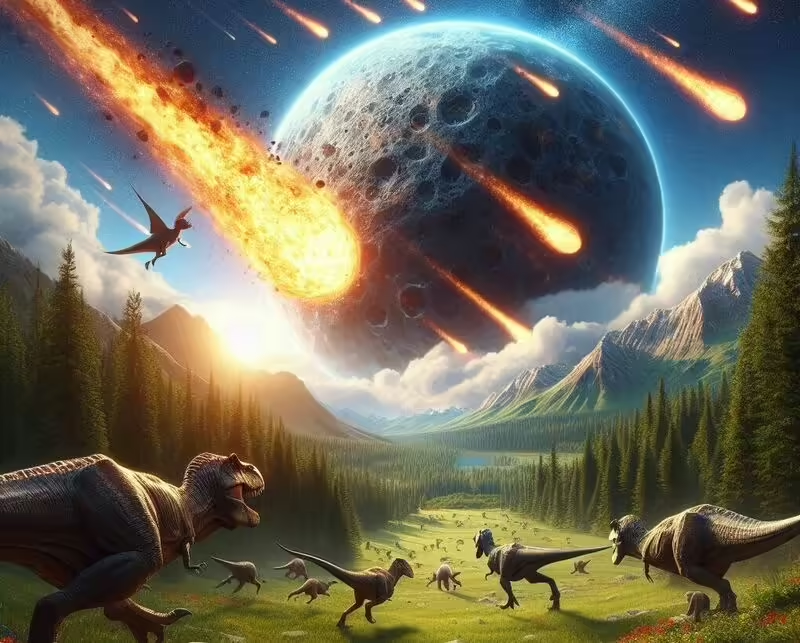Dinosaur fossils have made a surprising discovery: collagen, a protein found in bones, skin, muscles, and ligaments, has been found in samples that are 195 million years old. This significantly exceeds the expected half-life of peptide bonds, which typically break down within 500 years. This remarkable discovery challenges long-held assumptions about how biological materials degrade over time.
Proteins are usually among the first components to disappear from fossils, leaving only hard minerals like bone. However, in the case of these ancient dinosaurs, collagen was somehow preserved, giving scientists a unique opportunity to explore molecular preservation in a completely new way.
Dinosaur collagen defies time
A recent study by the Massachusetts Institute of Technology (MIT) explains how collagen is able to survive far beyond its expected lifespan. The researchers discovered a specific interaction at the atomic level that creates a barricade that protects collagen from attacks by water molecules, preventing the peptide bonds from breaking due to hydrolysis.
Senior study author Ron Raines, the Firmenich Professor of Chemistry at MIT, collaborated with lead author and postdoctoral researcher Jinyi Yang, postdoctoral researcher Volga Kojasa, and graduate student Gerard Porter.
“We provide evidence that this interaction prevents water from attacking and breaking the peptide bonds. This is the exact opposite of what happens in a normal peptide bond, which has a half-life of only 500 years,” explained Professor Raines.
The elasticity of dinosaur collagen
Collagen is essential for biological structures, especially because of its strong fibrous composition. Composed of long intertwined protein strands that form a triple helix, collagen is extremely stable.
“Collagen is the framework that holds us together,” said Professor Raines. “What makes the collagen protein so stable and such a good choice for this scaffold is that, unlike most proteins, it is fibrous.”
Evidence of collagen has even been found in dinosaur fossils, including Tyrannosaurus rex It is 80 million years old and the sauropodomorph fossils are almost 200 million years old.
Secrets of collagen longevity
Collagen peptide bonds, formed between carbon and nitrogen atoms, are inherently resistant to hydrolysis. These bonds also contain a double bond with oxygen, forming a molecular structure known as a carbonyl group. The carbonyl oxygen can prevent water from disrupting the structure by sharing its unpaired electrons with the adjacent peptide bond.
To test this, the team created two collagen mimics. One mimic formed a triple helix (trans) and the other had rotating peptide bonds (cis). The researchers found that water could penetrate and degrade the cis form, while the trans form resisted water damage.
“A peptide bond is either cis or trans, and we can change the cis-to-trans ratio. By doing that we can mimic the native state of collagen or create an unprotected peptide bond. And we found that when it’s unprotected, it doesn’t last long globally,” Professor Raines said.
Immortal protein
Unlike other proteins, collagen consists entirely of triple helices with no weak links. “Collagen consists of three helices from one end to the other. There are no weak links and I think that’s why it survives,” said Professor Raines.
While other hypotheses suggest that dehydration or other factors may contribute to collagen’s lifespan, the MIT study points to a unique molecular defense as the key factor.
“I can’t rule out the contribution of other factors, but 200 million years is a long time, and I think you need something at the molecular level, at the atomic level, to explain it,” Raines said.
Preservation of dinosaur collagen and protein
The discovery of dinosaur collagen and its ability to survive for hundreds of millions of years opens up new opportunities for studying protein preservation and fossilization. These findings could revolutionize the way scientists study ancient life, allowing for more accurate reconstructions of prehistoric biology.
And understanding how proteins resist degradation over time could inspire new technologies and applications in fields such as paleobiology and biotechnology. As researchers continue to explore the intricacies of collagen, the mysteries of how ancient proteins defy time could lead to broader scientific breakthroughs spanning disciplines from archaeology to bioengineering. The study was published in the journal ACS Central Science.













